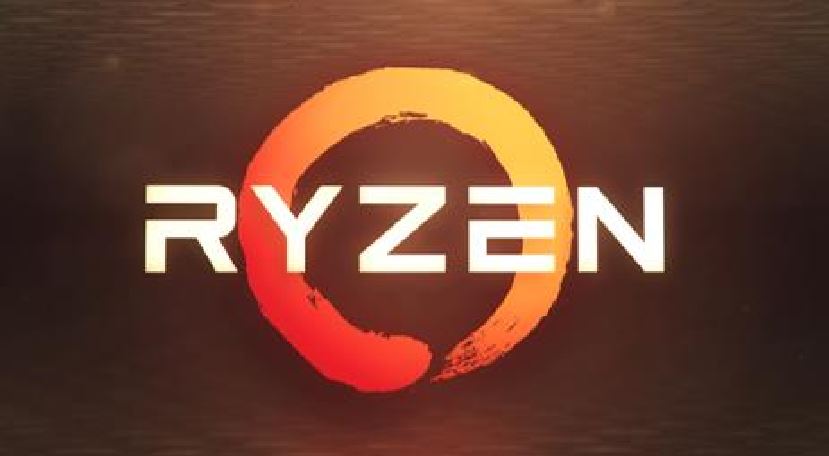First Ryzen 7 2700X And Ryzen 5 2600 Review Hits The Net
Until now, we haven't known quite what to expect from AMD's Pinnacle Ridge Ryzen lineup, but due to an apparent mistake, SiSoftware has published its review of the new Ryzen processors ahead of time. SiSoftware creates professional software applications, such as Sandra, so we know that the company has early access to samples. That means the following data is almost certainly accurate.
SiSoftware has since removed the review, but we've included screenshots of the test results. Unfortunately, these benchmarks only encompass synthetic tests and do not include gaming data, but it should give us a great idea of what is in store. We also get our first glimpse at the reduced Infinity Fabric Latency, which will undoubtedly improve performance in games.
These new Pinnacle Ridge models switch from the 14nm LPP process to the 12nm LP process. GlobalFoundries claims the 12nm LP process is 10% faster than the 14nm LPP process, and while all that extra performance will not equate directly to chip-level gains, the new Ryzen processors should have higher frequencies than their predecessors. They should also bring along a denser design and be more economical to produce, so AMD's competitive pricing might get even better.
The Specs
SiSoftware listed a snippet of the specifications for these processors, but it is limited. We already know that, being iterative updates, the Ryzen 7 model is 8C/16T while the Ryzen 5 model is 6C/12T. The Ryzen 7 2700X is widely expected to replace the Ryzen 7 1800X series, but we wouldn't rule out the possibility of a 2800X model coming to market eventually. The Ryzen 5 2600X models will replace their 1600X-series counterparts.
| Header Cell - Column 0 | Ryzen 7 2700X | Ryzen 5 2600 | Ryzen 5 1600X | Ryzen 5 1600 | Ryzen 7 1800X | Ryzen 7 1700X | Ryzen 7 1700 |
|---|---|---|---|---|---|---|---|
| MSRP | ? | ? | $219 | $189 | $349 | $309 | $299 |
| Interface | 1331 | 1331 | 1331 | 1331 | 1331 | 1331 | 1331 |
| Process | 12nm LP | 12nm LP | 14nm LPP GloFo | 14nm LPP GloFo | 14nm LPP GloFo | 14nm LPP GloFo | 14nm LPP GloFo |
| Cores/Threads | 8/16 | 6/12 | 6/12 | 6/12 | 8/16 | 8/16 | 8/16 |
| TDP | ? | ? | 95W | 65W | 95W | 95W | 65W |
| Base Freq. GHz | ? | ? | 3.6 | 3.2 | 3.6 | 3.4 | 3.0 |
| All-Core Precision Boost | ? | ? | 3.7 | 3.3 | 3.7 | 3.5 | 3.1 |
| Precision Boost Freq (dual core) | ? | ? | 4.0 | 3.6 | 4.0 | 3.8 | 3.7 |
| XFR Frequency GHz | ? | ? | 4.0 | 3.7 | 4.1 | 3.9 | 3.8 |
| Cache (L3) | 16MB | 16MB | 16MB | 16MB | 16MB | 16MB | 16MB |
| Unlocked Multiplier | Yes | Yes | Yes | Yes | Yes | Yes | Yes |
We have a much deeper look at the cache accommodations at the bottom of the article. In summary, the processors move up to a DDR4-2933 memory frequency, which is a nice upgrade from DDR4-2666 with the previous-gen models. The L1, L2, and L3 cache capacities remain unchanged, although AMD claims that it significantly reduced latency for L2 and L3 caches. SiSoftware's testing below bears that out.
Native Arithmetic, SIMD, And Cryptography Performance, Among Others
First, we have to caution that SiSoftware generated these test results in its test environment. That means that we can't be entirely sure of the test results. That said, SiSoftware is a highly respected ISV. We use many of these same tests, often in Beta form, for our CPU reviews.

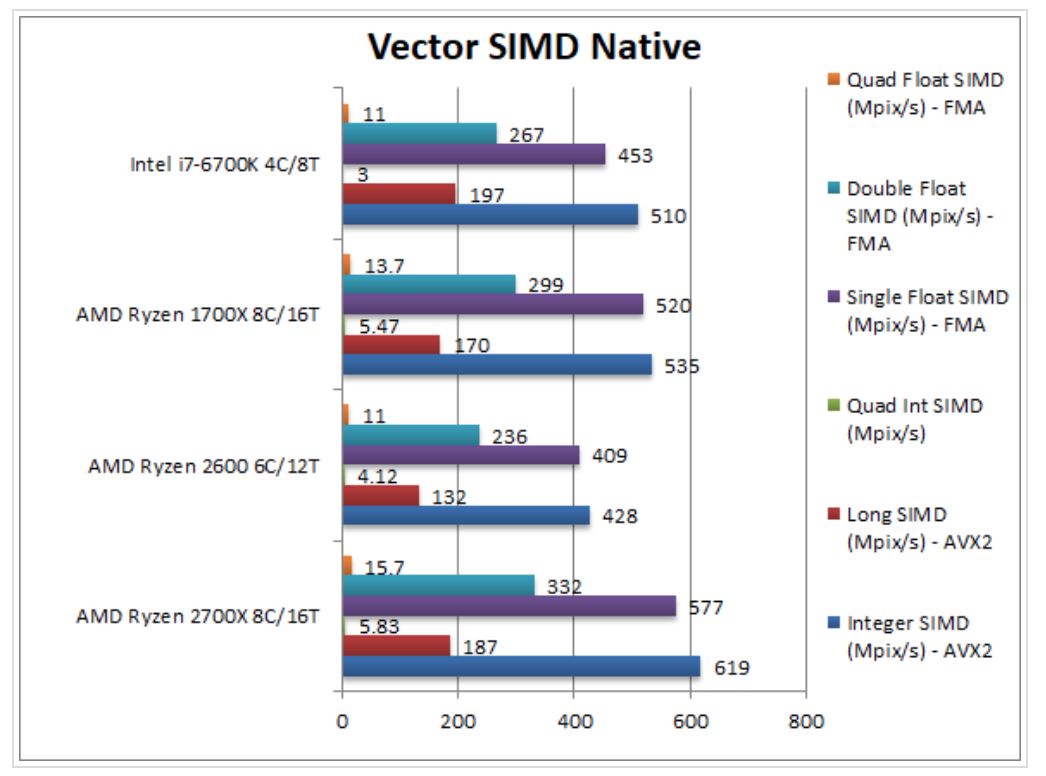
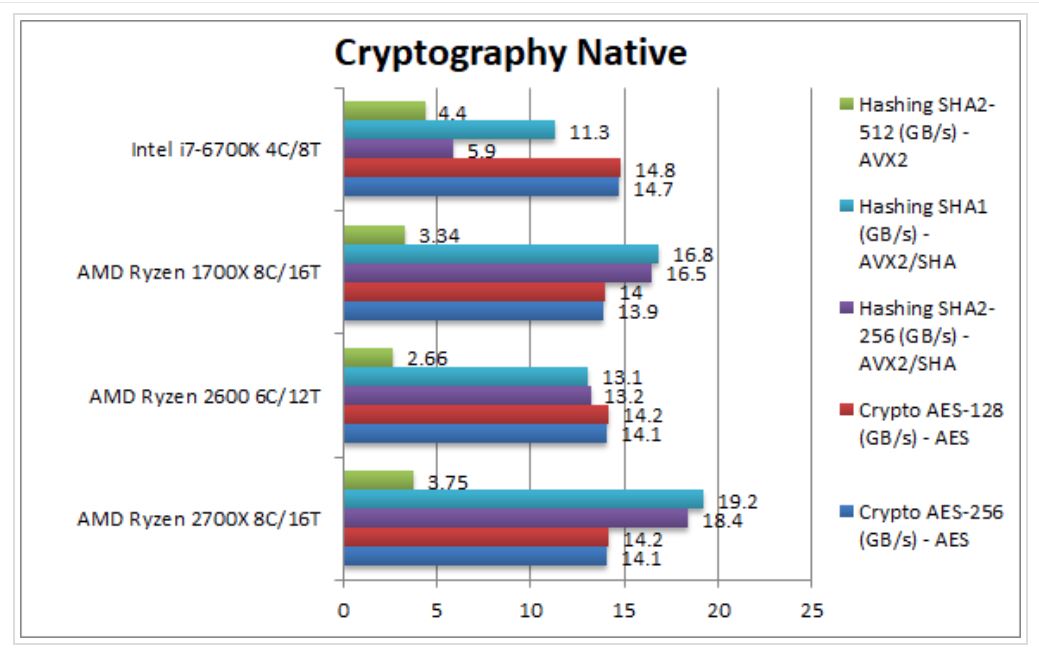
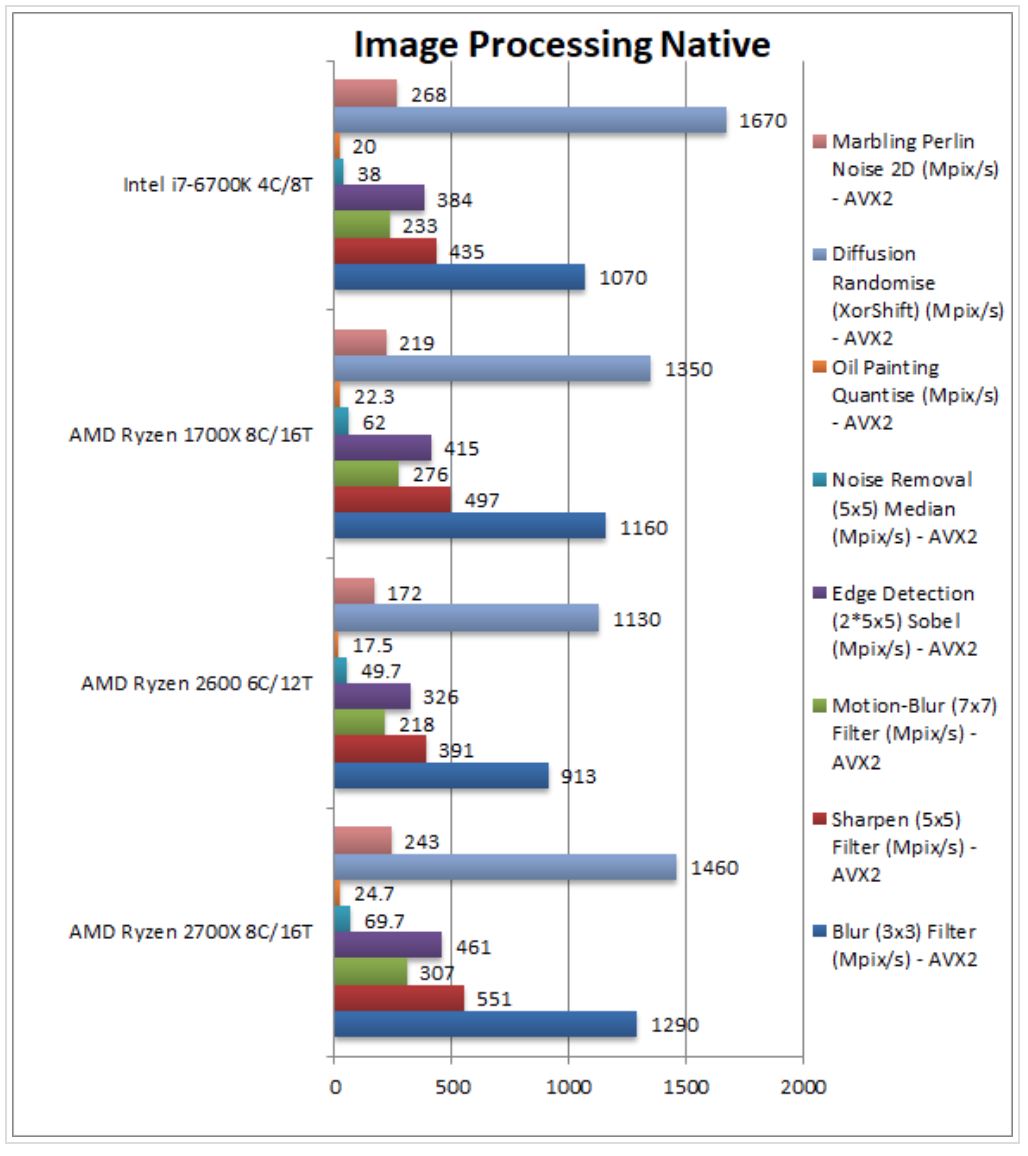
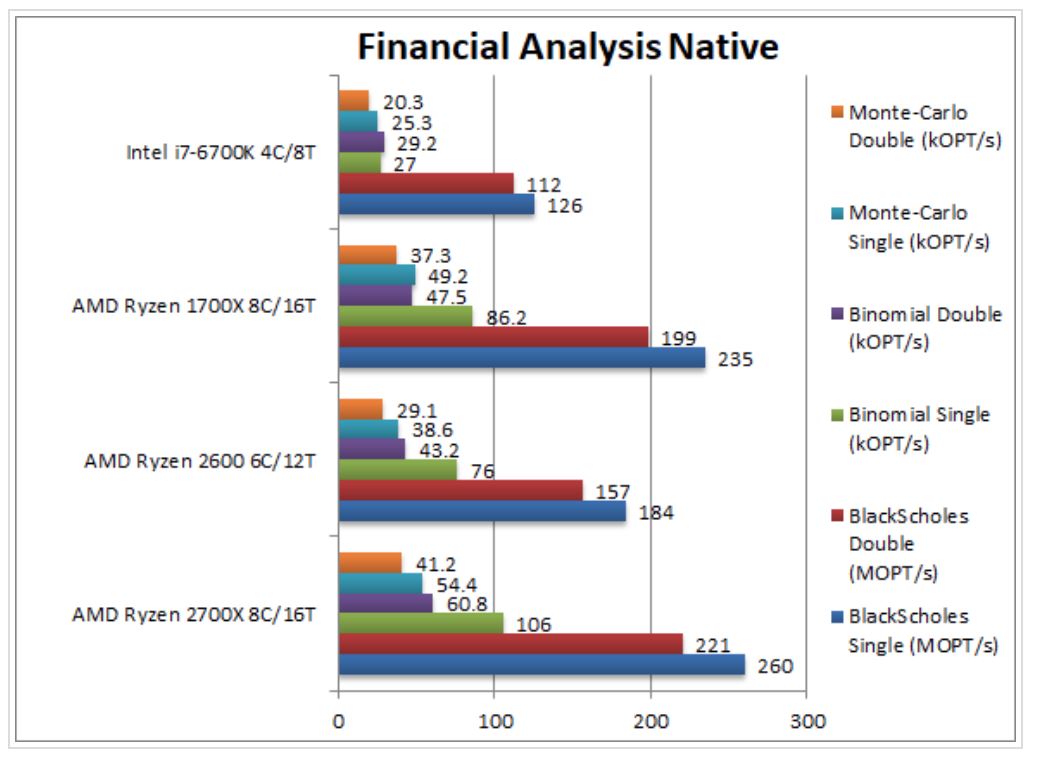
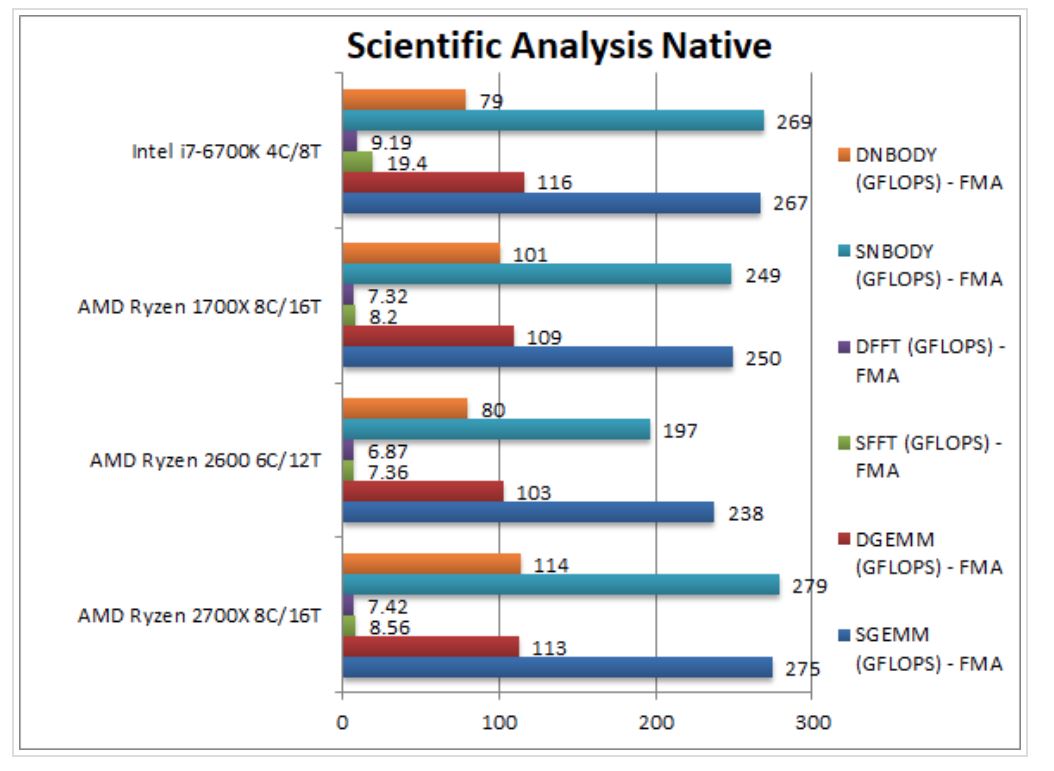
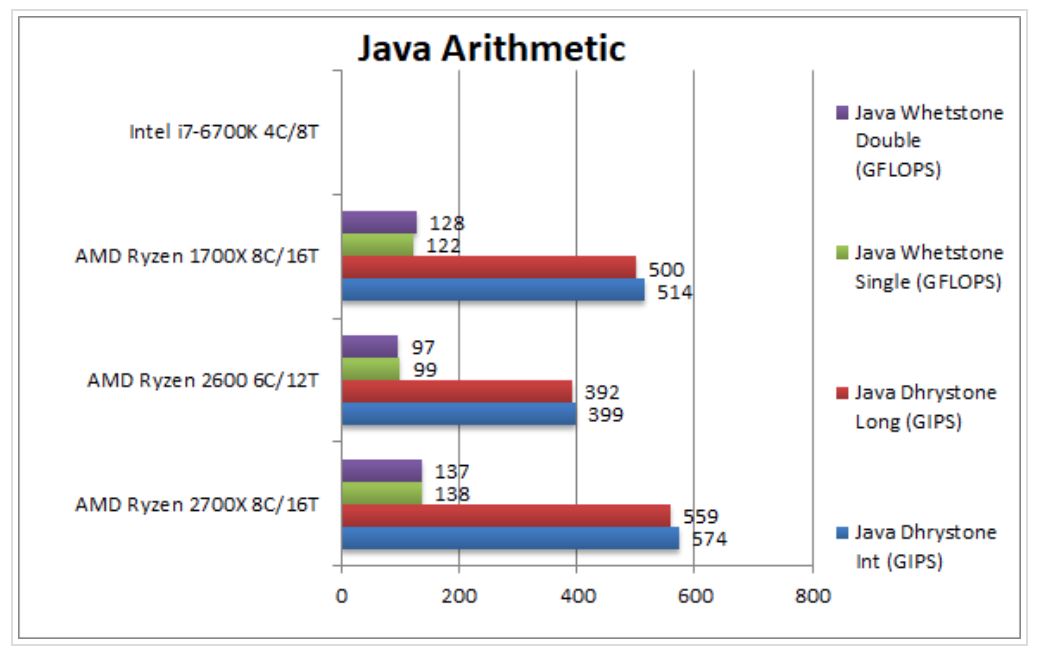
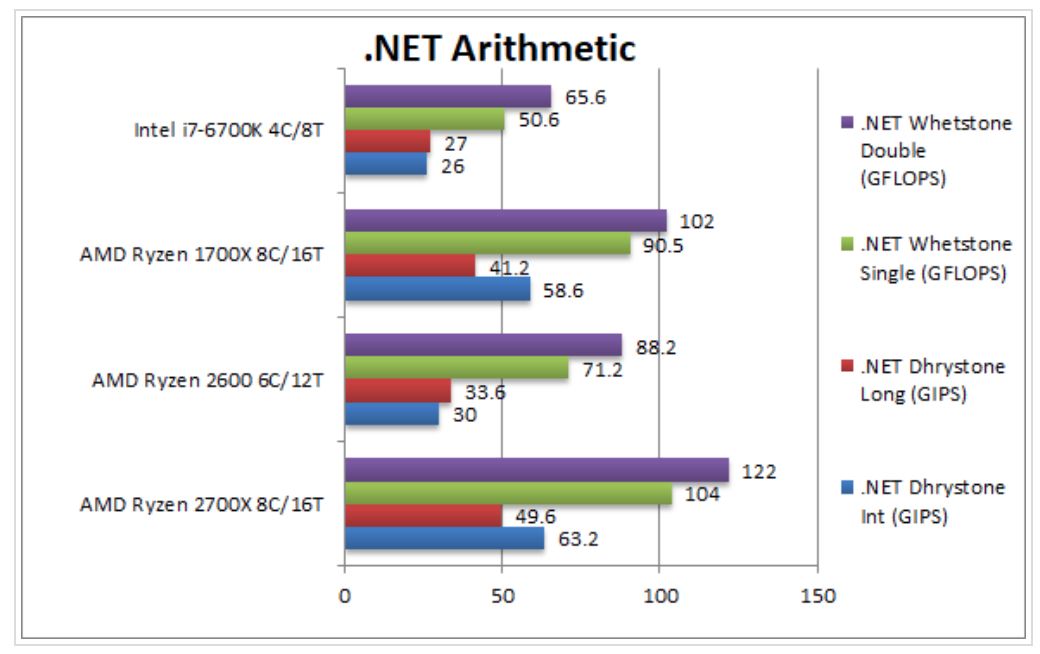

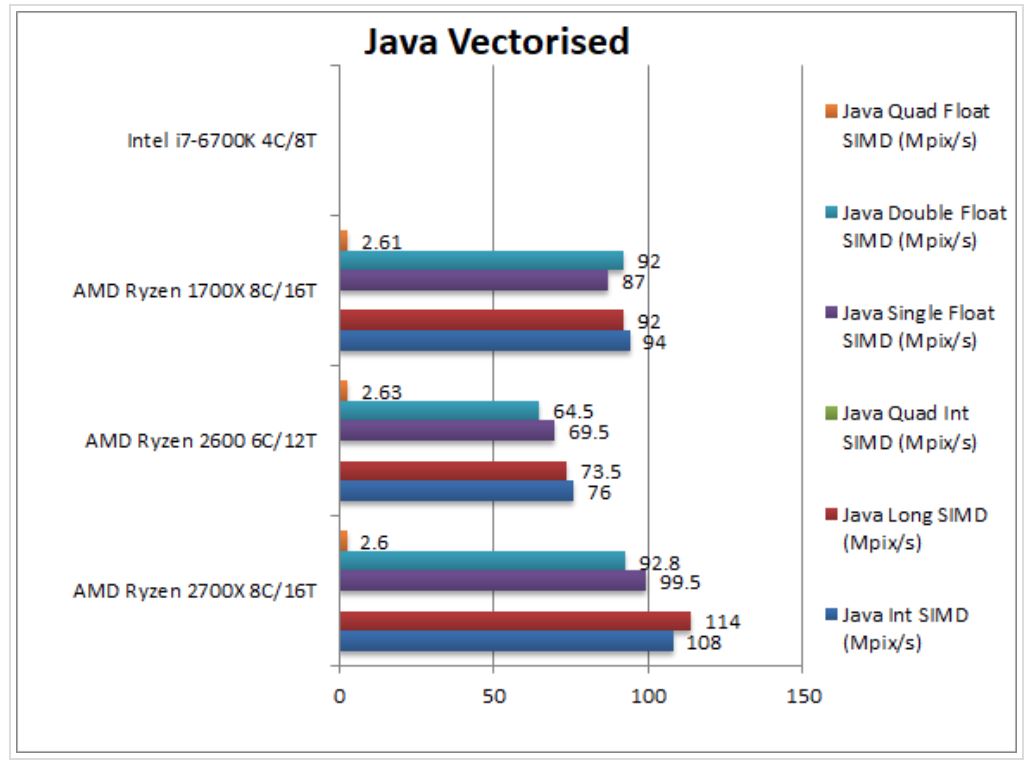
SiSoftware actually posted two reviews, with the first covering native performance. Here we see appreciable gains across the board in critical workloads such as Dhrystone (integer) and Whetstone (floating point). Improvements hover in the 8-12% range compared to the Ryzen 7 1700X, but a comparison to the Ryzen 7 1800X and a newer Intel Core i7 would have been more desirable.
Get Tom's Hardware's best news and in-depth reviews, straight to your inbox.
Overall, we expect these values to be roughly 5-6% ahead of the 1800X in similar tests. SiSoftware also reports a 10% average performance improvement with vectorized AVX2/FMA code.
The financial analysis test shows larger gains in the ~25% range, while Scientific and Image processing gain roughly 10%. Overall, a 10% raw performance improvement, which SiSoft attributes largely to frequency enhancements, seems like a solid step forward and is in line with AMD's own projections (Zen+ in the chart below).
Infinity Fabric, Cache & Memory Latency and Bandwidth
We use SiSoftware's Sandra Business Platinum version and its novel Processor Multi-Core Efficiency test to measure Infinity Fabric latency. The speed of AMD's Infinity Fabric is tied to the memory clock rate, so improvements yield performance advantages in workloads sensitive to memory latency, like gaming.
Our test results aren't directly comparable to SiSoft's, largely because this test is extremely sensitive and requires similar hardware platforms for testing. In either case, SiSoft measured appreciable reductions in Infinity Fabric latency across the board. SiSoft also measured a 15% improvement in multi-core bandwidth over the Ryzen 7 1700X.

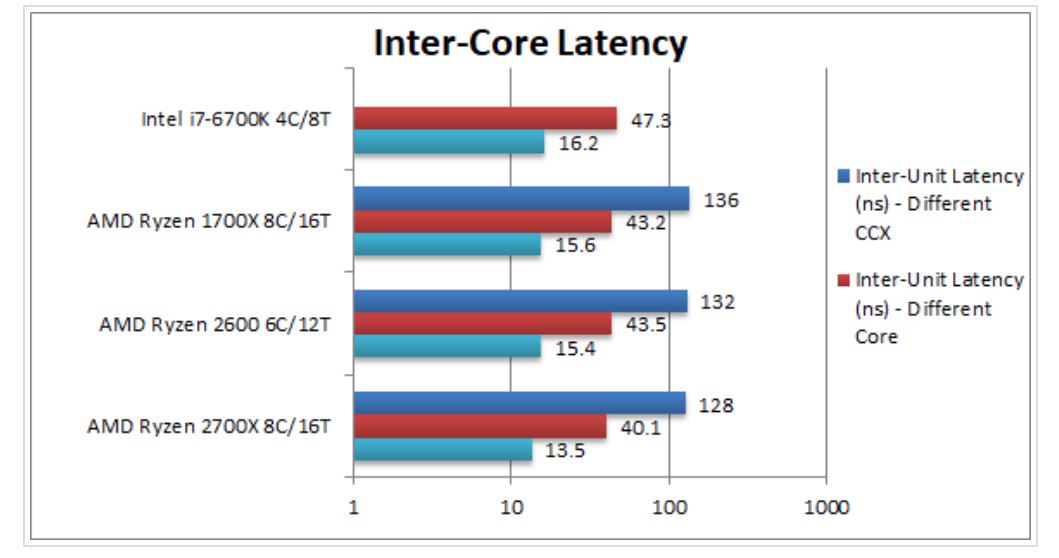
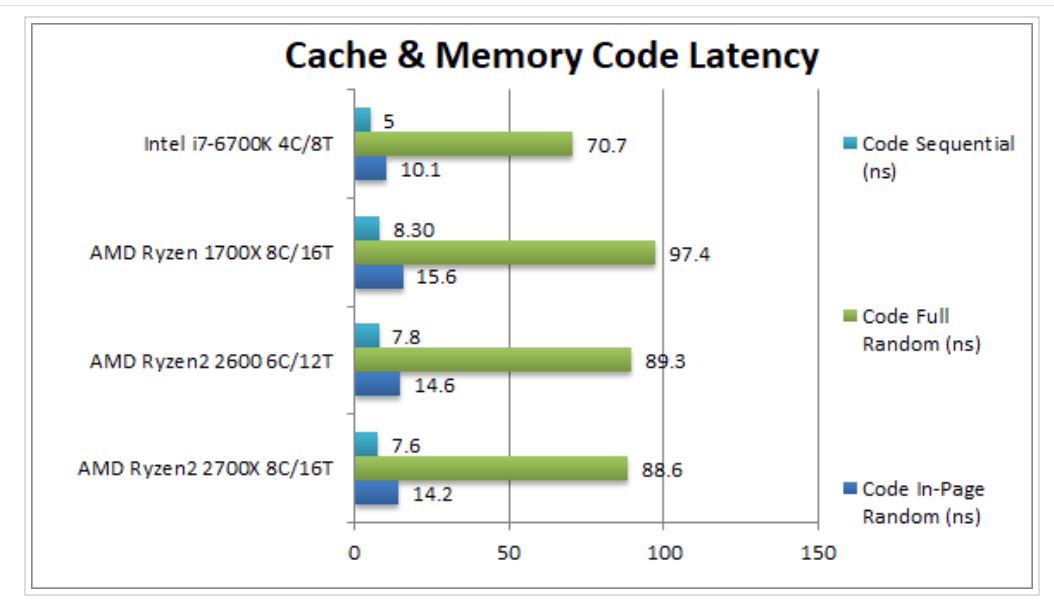
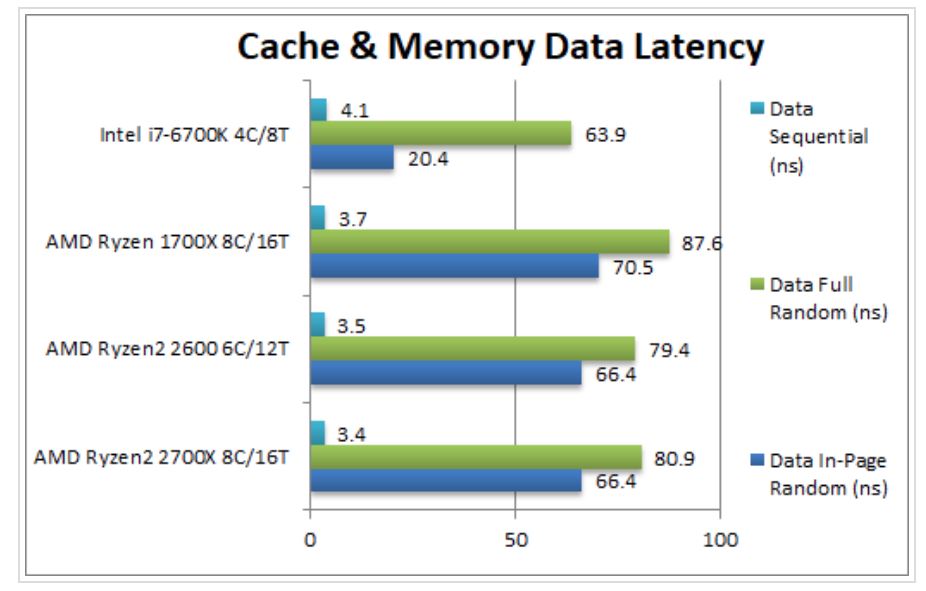
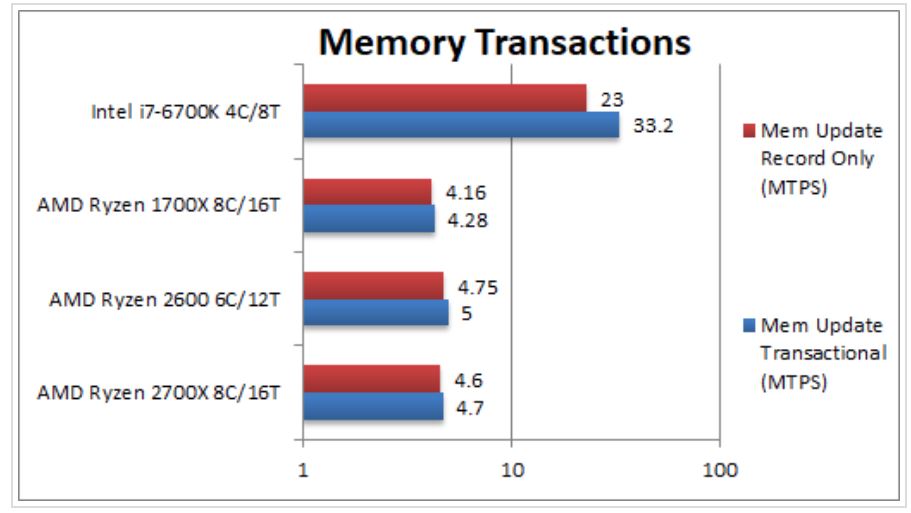
L2 and L3 Cache bandwidth have also improved by 20-30%. AMD also improved memory latency by 6-8%, but it still lags behind the Intel comparable.
Thoughts
AMD redefined the desktop CPU market last year as it returned to being competitive for the first time in several years. Along the way, the company brought us more cores for lower pricing, but it also forced Intel to become more competitive as well. Consider this: at the beginning of 2017 it cost $1,100 for an eight-core Intel processor, but by the end of the year Intel had eight-core models available for $469. Or, you could have just grabbed a $299 AMD eight-core Ryzen 7 1700. That's an amazing pricing improvement in a single year.
Now, AMD looks to offer more performance with its new Pinnacle Ridge models. Overall the new improvements look impressive, but pricing and other factors will come into play. We expect AMD to continue to pressure Intel with its new models, even as Intel reportedly prepares its own eight-core competitor. Unfortunately, we won't be able to come to any further conclusions until we have the processors in our labs, but it is exciting. Leaks and listings at online retailers are popping up more frequently, so it's evident that AMD's Pinnacle Ridge launch is near.
The slides below provide further detail about the cache hierarchy, along with a concentrated performance listing (click to expand).

Paul Alcorn is the Editor-in-Chief for Tom's Hardware US. He also writes news and reviews on CPUs, storage, and enterprise hardware.
-
redgarl So now Toms is posting other site reviews... true you didn't do much journalism when this sabotage story over CTS-labs hit the fan.Reply -
Martell1977 Why did they compare it to the 6700k? Seems really odd to compare a new chip to the competitions chip from two generations back...Reply -
Ninjawithagun Fake. Wait for real reviews please. You can down vote me all you want, it just means I'm right. There are way too many discrepancies for this review to be legitimate. Just because you fell for it, doesn't mean everyone will. Case in point - WHY would a legitimate review use a 6700K for comparison? That makes zero sense. It would have been very easy to compare the new Ryzen CPUs with a 7700K and 8700K with no issue. Again, this is fake. Wait for real reviews to be released in April.Reply -
Giroro I don't really know enough about these benchmarks to get a feel for how these processors would perform IRL, but I would like to see Ryzen 1600 in the comparisons when Toms does their own review, preferably with its memory overclocked to 2933MHz.Reply
Also, those images at the bottom of the article are pretty much entirely unreadable for me. -
Giroro Reply20799895 said:Why did they compare it to the 6700k? Seems really odd to compare a new chip to the competitions chip from two generations back...
Maybe it's really popular with SiSoftware's clients? -
oneblackened Reply20799895 said:Why did they compare it to the 6700k? Seems really odd to compare a new chip to the competitions chip from two generations back...
Because there's no architectural changes between Skylake and Coffee Lake, just process improvements allowing for higher clocks.
-
Chris Fetters CHASEMASSEY - No they do not. Only Ryzen-G chips have an iGPU & they max out at 4c/8tReply -
jpe1701 Reply20800622 said:Do these processors have integrated graphics like the 2400?
No they're just straight CPUs. -
Soda-88 I hope you'll take the time to test 2700X with fastest ram available, particularly in games seeing as that was the culprit behind Ryzen's suboptimal gaming performance.Reply
